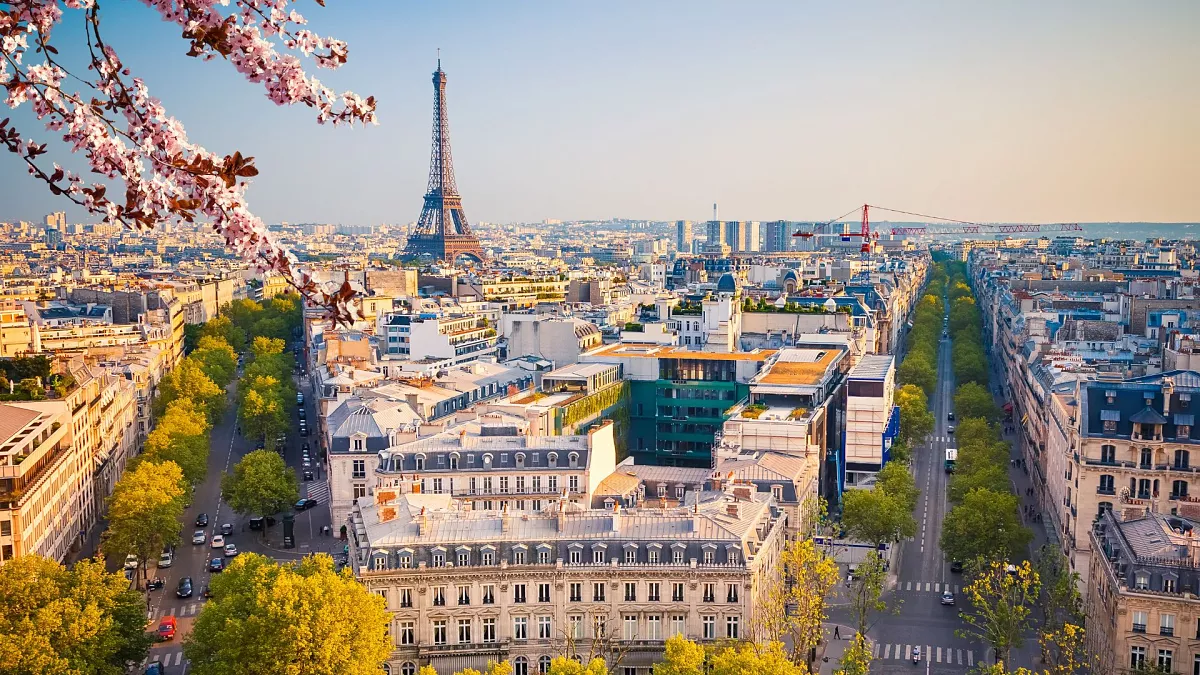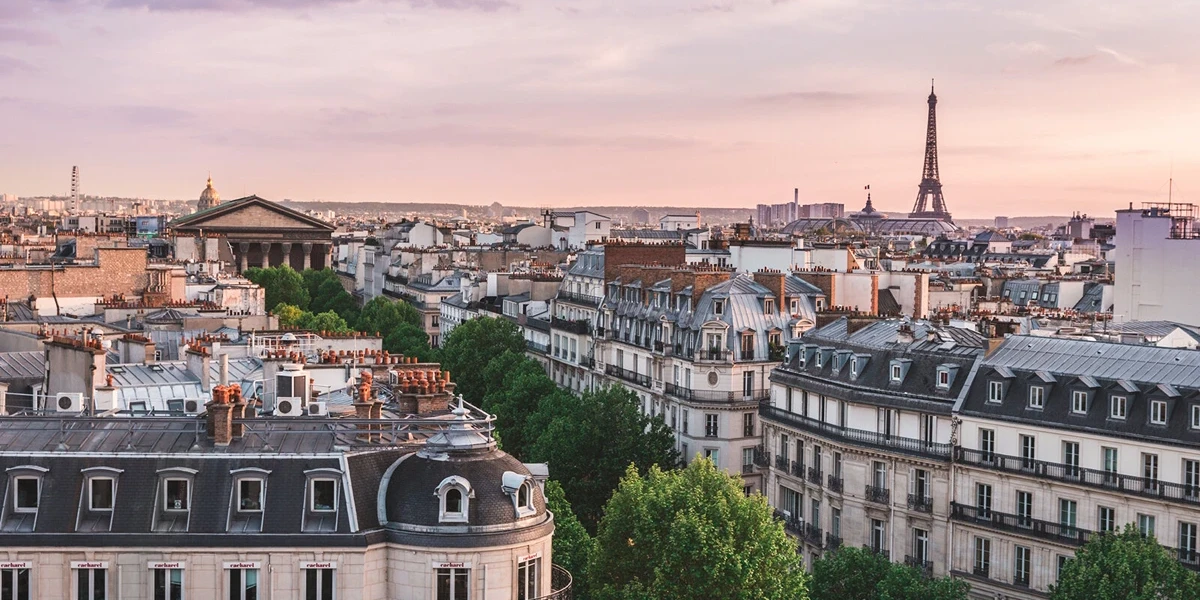Travel Resources
Before you embark on your Parisian adventure, consider these valuable resources:
- Flights: Find affordable options to Paris using our flight search tool.
- Travel Insurance: Ensure peace of mind with comprehensive coverage for your trip.
- Car Rental: Explore the city and its surroundings at your own pace.
- Tours: Discover the best experiences with trusted local operators.
Packing Checklist: Don’t forget essentials like comfortable shoes and a travel adapter.

Some History First
Paris boasts a rich history spanning over two millennia. Founded around 250 BC by a Celtic tribe called the Parisii, the city has witnessed the rise and fall of empires, revolutions, and cultural movements. Key historical events include the French Revolution in 1789 and the construction of iconic landmarks like the Eiffel Tower in 1889. From the medieval period to the Belle Époque and beyond, Paris has continuously reinvented itself while preserving its historical charm.
Paris Today
Today, Paris stands as a global center for art, fashion, gastronomy, and culture. With a population of over 2 million in the city proper and 12 million in the greater metropolitan area, Paris is a bustling metropolis that seamlessly blends historical significance with modern innovation. The city is home to world-renowned museums, haute couture fashion houses, and a thriving tech startup scene. Paris continues to be one of the world’s most visited cities, welcoming millions of tourists each year to experience its timeless allure.
Is Paris Safe?
Paris is generally considered a safe city for tourists and residents alike. The city has a strong police presence, especially in popular tourist areas. However, as with any major metropolitan area, it’s important to stay vigilant. Be aware of pickpocketing and scams, particularly in crowded areas and on public transportation. It’s advisable to take standard precautions such as keeping valuables secure and being aware of your surroundings. The city has also implemented increased security measures at major attractions and events.
Where is Paris?
Paris is located in north-central France, in the Île-de-France region. The city is built on the River Seine, which divides it into the Right Bank to the north and the Left Bank to the south. Paris serves as the country’s political, economic, and cultural capital. It’s situated approximately 280 km (174 miles) southeast of London and 450 km (280 miles) southwest of Amsterdam, making it a central hub for European travel.
Latest Articles
From The Area
Nothing found.
What is the Best Time to Visit Paris?
Paris is a year-round destination, each season offering its own unique charm:
- Spring (March to May): Mild temperatures and blooming gardens make this a picturesque time to visit, though occasional rain showers are common.
- Summer (June to August): Peak tourist season with warm weather, long days, and numerous outdoor events, but expect larger crowds and higher prices.
- Fall (September to November): Pleasant temperatures and fewer tourists create an ideal atmosphere for sightseeing and enjoying local culture.
- Winter (December to February): Chilly but festive, with beautiful holiday decorations and potential for snow, perfect for experiencing Parisian café culture.
How to Get to Paris & Around
Paris is well-connected and easily accessible:
- By Air: Paris is served by two main airports: Charles de Gaulle (CDG) and Orly (ORY), with flights from major cities worldwide.
- By Train: High-speed trains connect Paris to major European cities via the Eurostar and TGV networks.
- By Bus: Long-distance buses offer budget-friendly options from various European cities.
Getting around Paris:
- Metro and RER: The extensive underground system is the fastest way to navigate the city. Consider purchasing a multi-day pass for convenience.
- Buses: Complement the metro system and offer scenic routes through the city.
- Vélib’: Paris’s bike-sharing system is an eco-friendly way to explore.
- Walking: Many attractions in central Paris are within walking distance.
- Taxis and Ride-sharing: Available but can be expensive during peak times.
Things to Do in Paris
Paris offers an endless array of attractions and activities:
- Eiffel Tower: The iconic symbol of Paris, offering breathtaking views of the city.
- Louvre Museum: Home to thousands of works of art, including the Mona Lisa.
- Notre-Dame Cathedral: Currently under restoration, but still an impressive sight from the outside.
- Champs-Élysées and Arc de Triomphe: Stroll down this famous avenue and climb the arch for panoramic views.
- Musée d’Orsay: Housed in a former railway station, featuring impressive Impressionist art.
- Montmartre and Sacré-Cœur: Explore the artistic neighborhood and visit the beautiful basilica.
- Seine River Cruises: Enjoy the city from a different perspective on a boat tour.
- Palace of Versailles: Take a day trip to this opulent royal château just outside Paris.
Where To Stay In Paris
Paris offers a wide range of accommodation options to suit every budget and preference:
- 1st-8th Arrondissements: Central districts with luxury hotels and easy access to major attractions.
- Le Marais (3rd and 4th): Trendy area with boutique hotels and a vibrant nightlife.
- Latin Quarter (5th): Student-friendly area with budget accommodations and lively atmosphere.
- Saint-Germain-des-Prés (6th): Upscale neighborhood known for its cafes and literary history.
- Montmartre (18th): Artistic area with charming hotels and stunning city views.
Book well in advance, especially during peak season (June-August) and major events like Fashion Week.

What To Eat In Paris
Parisian cuisine is world-renowned for its sophistication and flavor:
- Croissants and Pain au Chocolat: Must-try breakfast pastries from local bakeries.
- Steak-Frites: A classic French dish of steak and fries.
- Coq au Vin: Chicken braised in wine, a traditional French comfort food.
- Escargots: Snails prepared with garlic and parsley butter.
- Macarons: Colorful meringue-based sandwiches with various flavors.
- Cheese: Try a variety of French cheeses, from Camembert to Roquefort.
- Wine: Sample renowned French wines from various regions.
Don’t miss the experience of dining at a traditional Parisian café or bistro.
Entry & Exit Requirements
As part of France, Paris follows the Schengen Agreement:
- EU citizens: Can enter with a valid ID card or passport.
- Non-EU citizens: Generally need a valid passport and may require a Schengen visa. Check specific requirements based on your nationality.
- Stays longer than 90 days: May require a long-stay visa or residence permit.
Always check the latest entry requirements before your trip, as they can change.
What To Pack For Your Trip
Consider these essentials when packing for Paris:
- Comfortable walking shoes for exploring the city
- Versatile clothing suitable for layering
- Travel adapter for European outlets
- Umbrella or light rain jacket, especially in spring and fall
- Elegant outfit for fine dining or special events
- Reusable water bottle to stay hydrated
- French phrasebook or language app
Remember to pack any necessary medications and a copy of your travel insurance.
FAQs
The official currency of France is the Euro (EUR).
While French is the official language, many locals in tourist areas speak English. Learning basic French phrases can enhance your experience.
Yes, major credit cards are widely accepted in most establishments in Paris.
Explore neighborhoods like Le Marais, Saint-Germain-des-Prés, and Montmartre for unique experiences and local charm.


